The Philips PUS8209 is a model that stands out primarily for its unique Ambilight system. The three-sided wall lighting behind the television dynamically adjusts to the picture, adding an extraordinary atmosphere when watching films or playing games. This solution, for which Philips is renowned, makes a difference and could be a great choice for those looking for something more unconventional in everyday use. In terms of picture quality, the television performs quite well, especially in this price range. The VA panel provides solid contrast and decent blacks, which works particularly well in the evening in dimly lit rooms. Watching films in such conditions is genuinely enjoyable, although the screen brightness (280 nits) leaves much to be desired – in bright rooms, the image can appear washed out, and HDR content does not make a significant impression. When it comes to gaming, the PUS8209 also has some advantages. Support for VRR, ALLM, and a low input lag of 13 ms ensures that gameplay is smooth and responsive. Of course, this is not equipment for advanced gamers, but for those who occasionally pick up a controller, it should suffice. The biggest downside is the Titan OS operating system. Many popular applications are lacking, and the interface does not always function as smoothly as one would wish. The remote control, which requires aiming at the television, can be irritating, especially in situations where quick operation is expected. In summary: the Philips PUS8209 is a television that will perform well for basic applications. Ambilight adds uniqueness and enhances the atmosphere during viewing. In everyday use or occasional gaming, it manages, but its limitations – particularly in screen brightness and operating system – may be problematic for more demanding users. If one is looking for simple equipment with an unusual visual addition, this model is worth considering.
- Matching (Score)
- Our verdict
- TV appearance
- Where to buy
- Contrast and black detail
- HDR effect quality
- Factory color reproduction
- Color reproduction after calibration
- Smoothness of tonal transitions
- Image scaling and smoothness of tonal transitions
- Blur and motion smoothness
- Console compatibility and gaming features
- Input lag
- Compatibility with PC
- Viewing angles
- TV efficiency during daytime
- Details about the matrix
- TV features
- Apps
- Playing files from USB
- Sound
Philips PUS8209 vs Samsung U8000F (VA)
Direct compare
PUS8209
U8000F / U8092F


Panel type: LCD VA
Resolution: 3840x2160
System: Titan OS
Model year: 2024
Complete the survey to find out the result

Panel type: LCD IPS
Resolution: 3840x2160
System: Tizen
Model year: 2025
Complete the survey to find out the result

Overall rating
5.2
5.7
Movies and series in UHD quality
5.4
5.7
Classic TV, YouTube
6.1
5.9
Sports broadcasts (TV and apps)
4.9
5.5
Gaming on console
6.6
6.5
TV as a computer monitor
2.0
6.0
Watching in bright light
4.4
3.8
Utility functions
4.5
5.5
Apps
6.2
8.7
Sound quality
5.0
5.7
Complete the survey to find out what fits your preferences
Advantages
High native contrast
Three-sided Ambilight system – a unique backlighting of the wall behind the television that enhances immersion during viewing
Low input lag – around 13 ms
Includes basic features for gamers - VRR and ALLM
Support for Polish characters and subtitle personalisation – the built-in player allows changing the colour and size of the font
Support for Dolby Atmos and DTS – a wide range of supported audio codecs
Decent black and contrast (VA panel version)
Advanced Smart system: Tizen
Great for working with text - excellent font display
Basic functions for gamers - VRR and ALLM
Low input lag
Disadvantages
Titan OS operating system – limited number of applications
Poor brightness (280 nits) – issues with viewing in bright surroundings
Poor viewing angles – typical for VA panels,
Issues with font rendering
Low brightness
Worse viewing angles than the IPS matrix version (Obvious obviousness 😉)
Infrared remote control
Worse appearance than its predecessor
Our verdict
Samsung U8000F with a VA panel is a television that can pleasantly surprise in its class – of course, if we know what to expect from it. The biggest advantage of this variant is certainly the quality of black levels. Compared to the version with an IPS panel, the difference is enormous – the image gains depth, contrast looks significantly better, and evening film sessions no longer feel like watching content through a grey filter. For a budget segment device, this is truly a nice surprise. The reliable Tizen system is also a plus, as it not only runs smoothly but also offers access to a full range of applications, support for SmartThings, and a voice assistant (via the app). The PC mode and console connection function flawlessly – fonts are clear and readable. Additionally, it includes basic features for gamers, such as VRR and ALLM, which – although they won’t transform this television into an e-sports machine – are completely sufficient for occasional gaming.
Of course, like any construction in this budget, the U8000F with a VA panel has its limitations. Viewing angles are not its strongest point – when watching from the side, it’s easy to notice a drop in quality. Nonetheless, it's hard to see this as a serious flaw – because something has to give. Better black levels always come at the cost of slightly less flexibility in positioning. When it comes to HDR, we have rather a symbolic approach – brightness is too low to speak of a true "wow" effect, and the colour palette is limited. But let’s face the truth – that’s not the reason one buys such a television. So if you are planning to purchase the U8000F, we definitely recommend opting for the variant with a VA panel. It’s still a very basic model, but in this version, it offers more than one might expect – especially in terms of black quality. And in this price bracket, that’s quite a lot.
TV appearance


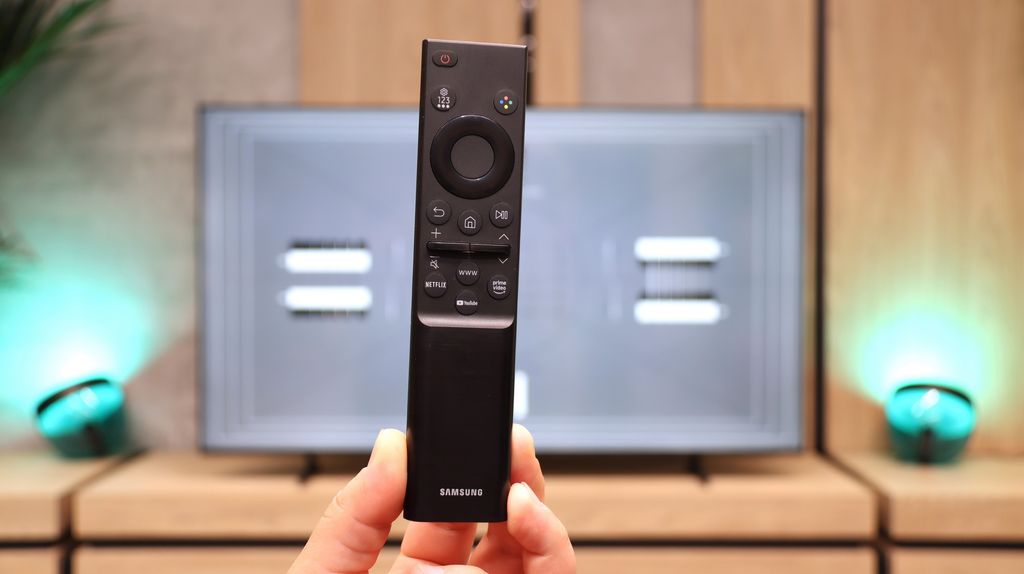
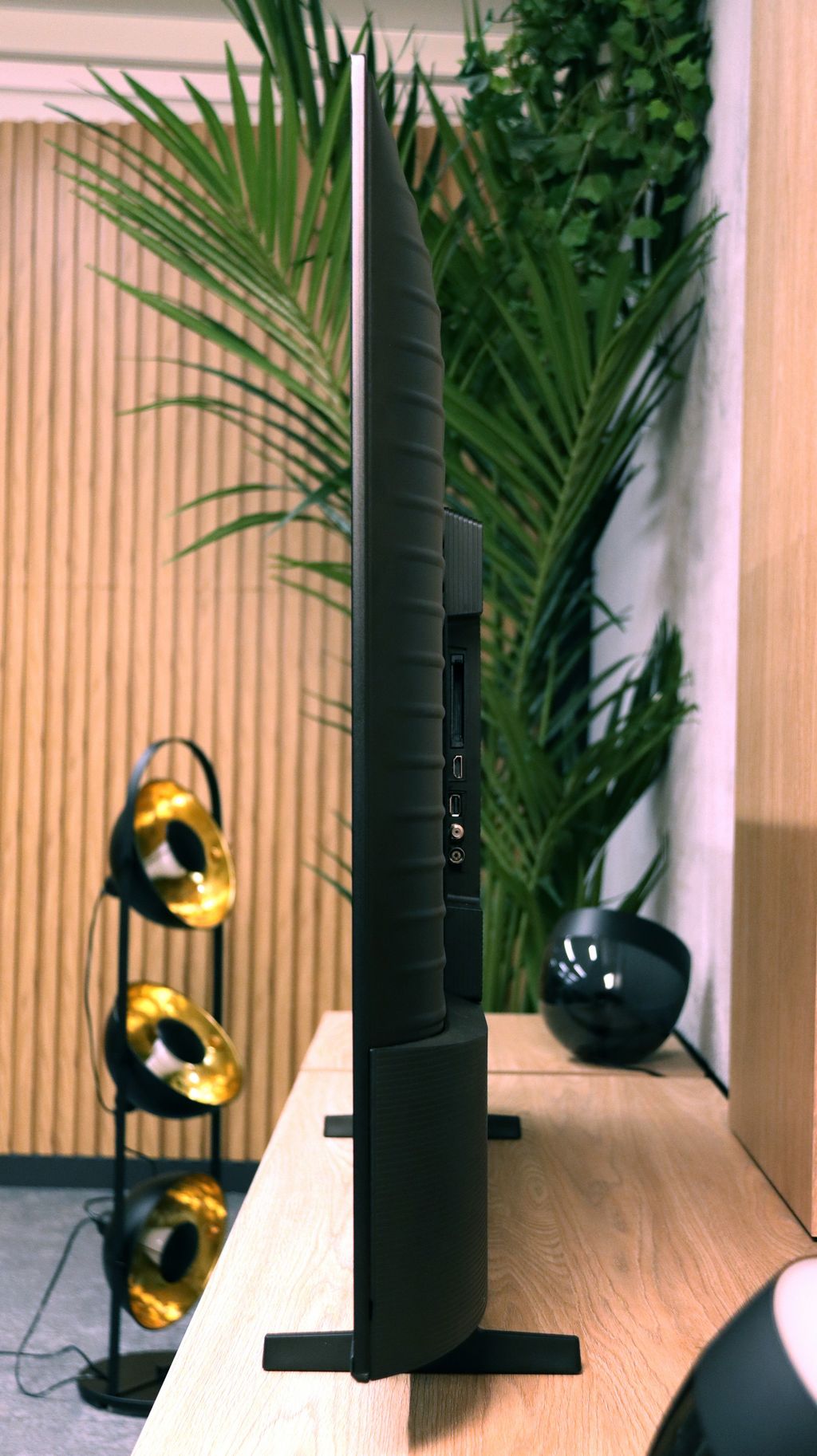
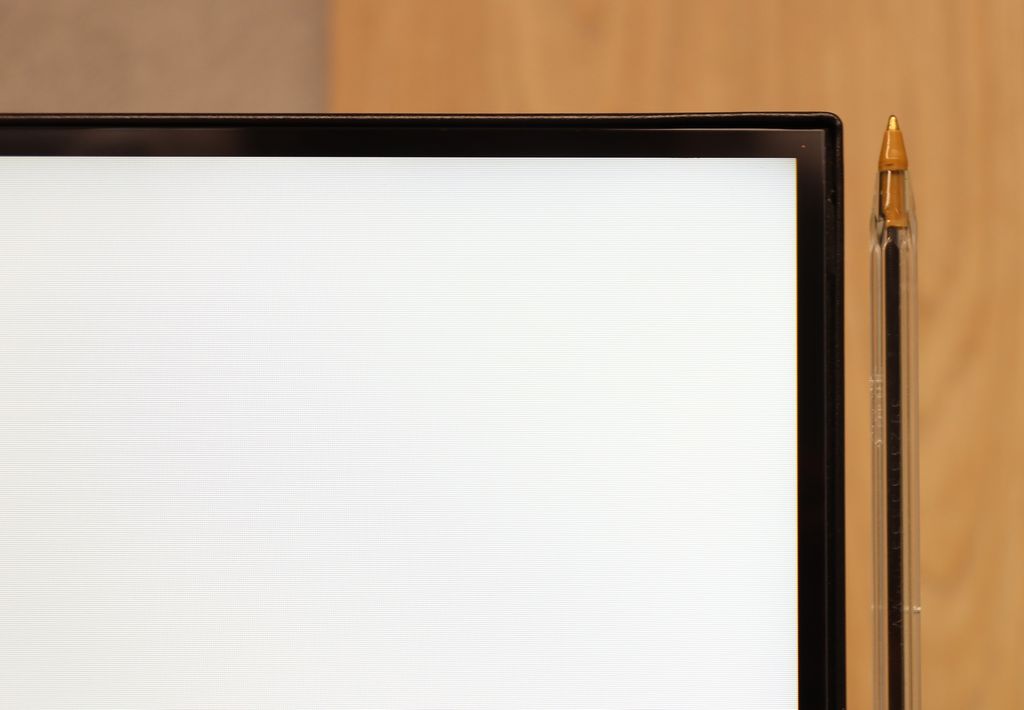
Contrast and black detail
6.6/10
5.3/10
Local dimming function: No
Local dimming function: No
Contrast:

Result
8,050:1

Result
7,300:1

Result
10,200:1

Result
9,050:1

Result
8,200:1

Result
4,600:1

Result
4,150:1

Result
3,900:1

Result
3,750:1

Result
3,400:1
Halo effect and black detail visibility:

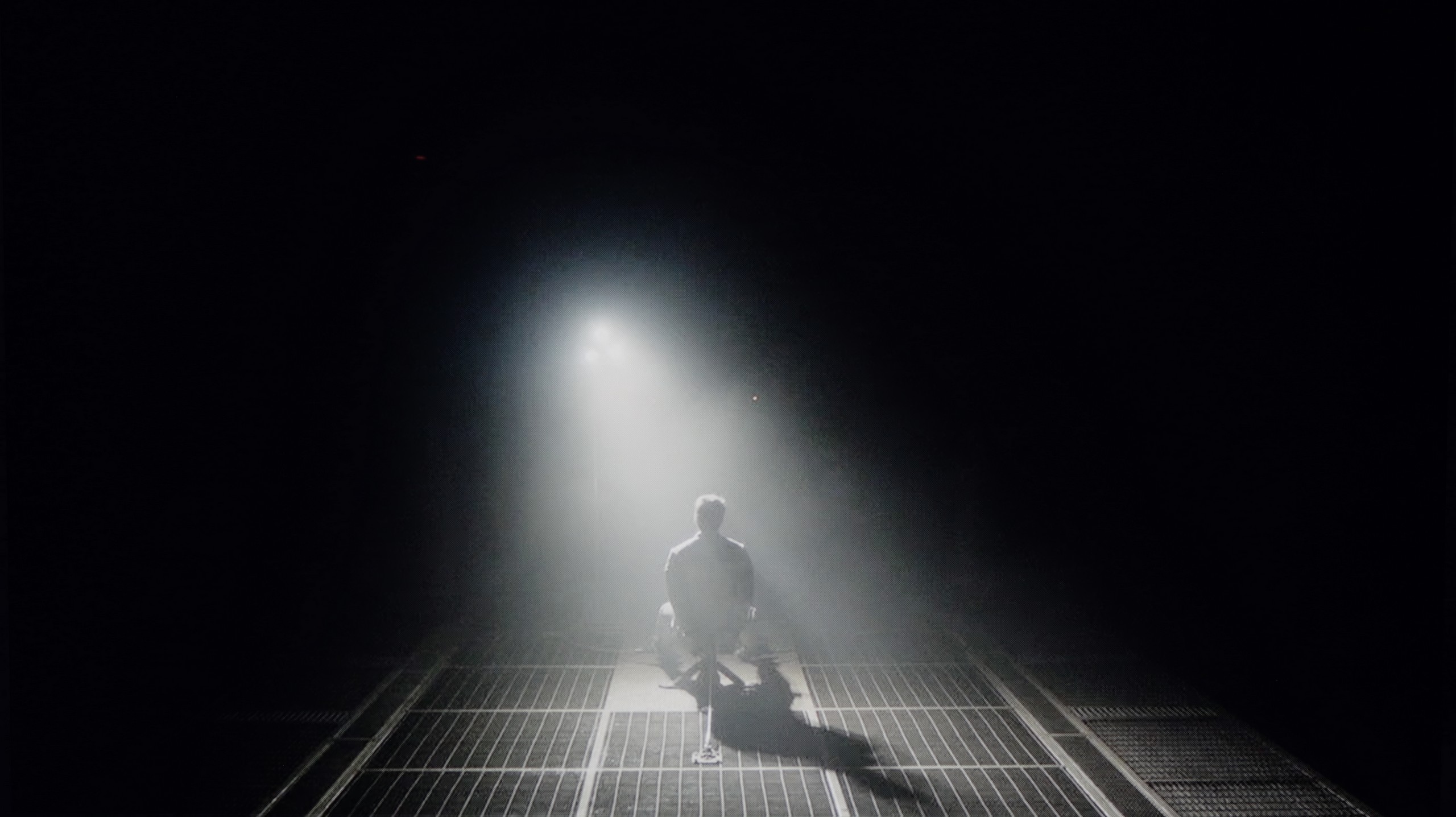
Philips PUS8209 pleasantly surprised us in terms of contrast, which is truly solid for its price range. Thanks to the use of a VA panel, a contrast level of 8000:1 has been achieved, which is considered an excellent result in this price category. In tests using scenes from the film Oblivion, the television performed well, providing visible light separation. Three independent light sources in the test scene were portrayed without significant issues. Similarly, in the case of the film Sicario 2, where the blacks, although not perfect, appear decent enough to allow for the distinction of details in the darker parts of the image. The lack of local dimming technology is noticeable, however, the manufacturer has implemented a "global dimming" function. This mechanism enables the television to automatically darken or brighten the entire screen depending on the content, which somewhat improves the perception of contrast. Philips PUS8209 offers solid contrast and decent results in tests. Although it lacks the precision of local dimming, its capabilities at this price are satisfactory and will meet the needs of most users.
It is worth noting that the test concerns variants with a VA panel, which perform considerably better in terms of black levels and contrast than the 55-inch version equipped with an IPS panel. Thanks to the higher native contrast (although it is not a top result among VA panels), the tested scenes looked significantly better – without noticeable greyness or the typical washed-out shadows associated with IPS panels. The black levels in the U8092F model can be considered really good and satisfying, especially in this price range. Of course, we are not dealing with a construction equipped with local dimming, so it is difficult to expect spectacular results in very challenging scenes. On the other hand, we are talking about an exceptionally budget television that performs quite solidly within its category.
HDR effect quality
3.8/10
3.1/10
Luminance measurements in HDR:

Result
231 nit

Result
268 nit

Result
278 nit

Result
274 nit

Result
281 nit

Result
212 nit

Result
173 nit

Result
265 nit

Result
90 nit

Result
250 nit
Scene from the movie “Pan” (about 2800 nits)


Scene from the movie “Billy Lynn” (about 1100 nits)


Static HDR10


Dynamic: HDR10+
Dynamic: HDR10+


HDR luminance chart:
Samsung U8000F (VA)
Luminancja HDR
Luminance of RGB colors
Philips PUS8209
Luminancja HDR
Luminance of RGB colors
Unfortunately, this is where the problems begin. A maximum brightness of 280 nits is definitely too low to feel the true effect of HDR. In practice, the image resembles standard SDR more, so it’s hard to speak of deeper visual experiences. On the positive side, the colour gamut coverage is commendable – 91.4% DCI-P3 is a score that will be sufficient for most films. It must also be said that the image is stable and there are no issues with sudden changes in brightness or colours. Overall, HDR on this television is more of a formality than an actual added value. If we are looking for genuine HDR thrills, this model may not meet expectations.
While the U8000F with a VA panel can still be praised for decent blacks, there is no longer any reason to be enthusiastic about brightness – especially in HDR scenes. The television achieves a maximum of just under 250 nits, which is simply too low to speak of any impressive light effects. Bright elements appear pale, and scenes that should sparkle look rather flat. We observed an interesting situation during the test of a scene from the film Sicario 2 – the screen became noticeably darker, as if the television was trying to hide its limitations in displaying blacks. One might get the impression that the device artificially darkens the image to enhance contrast, but in practice, the effect makes very little difference, other than the fact that we see less on the screen. Furthermore, there is the issue of colours – the U8000F does not support a wide colour gamut, so one cannot count on the vibrant, saturated hues known from better models. The HDR image here resembles slightly brightened SDR and... perhaps that is even a good thing. With this model, it is not worth expecting a cinematic experience – it is better to treat HDR as a modest addition.
Factory color reproduction
6/10
6.5/10


Factory Mode
After calibration
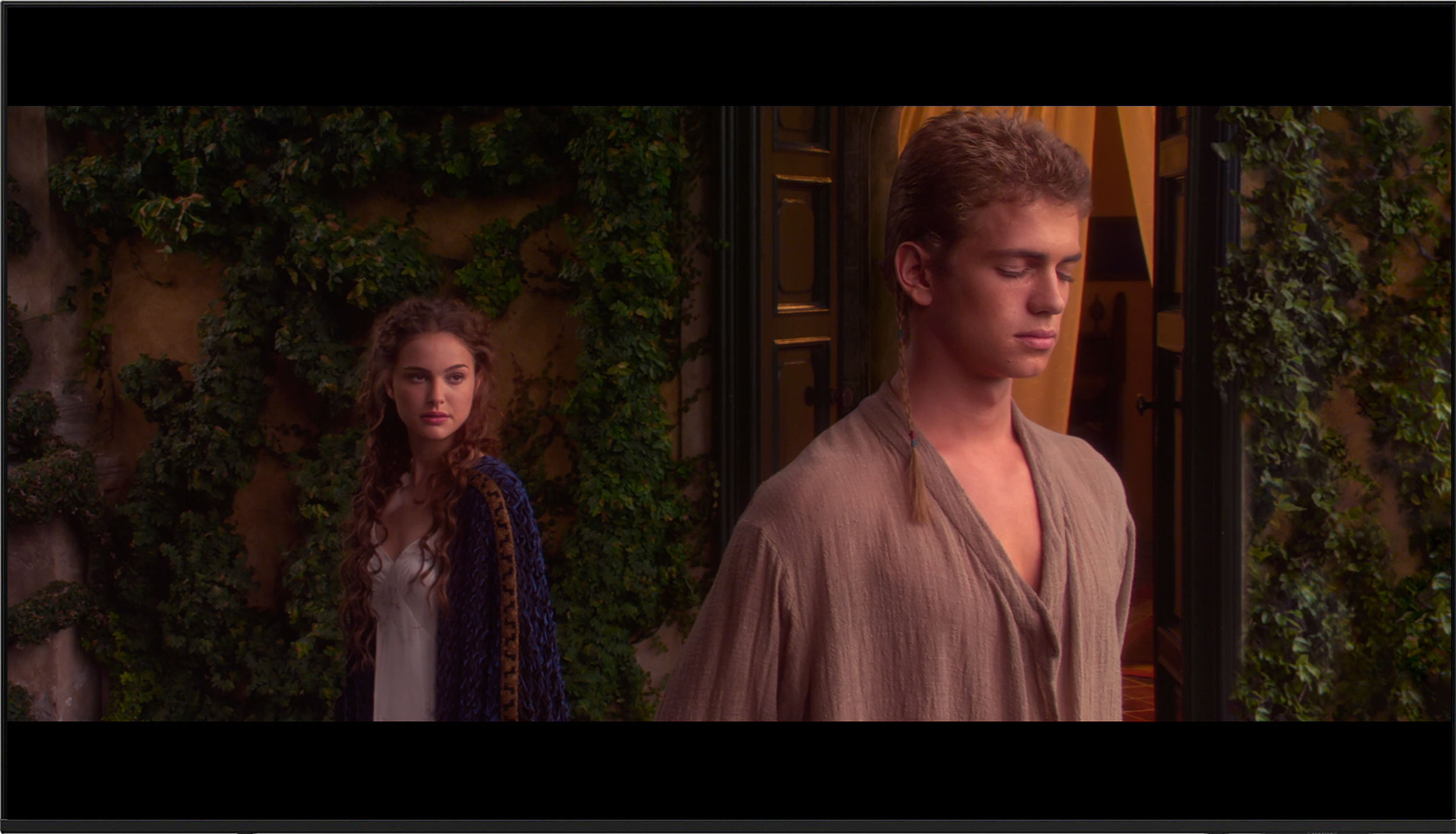
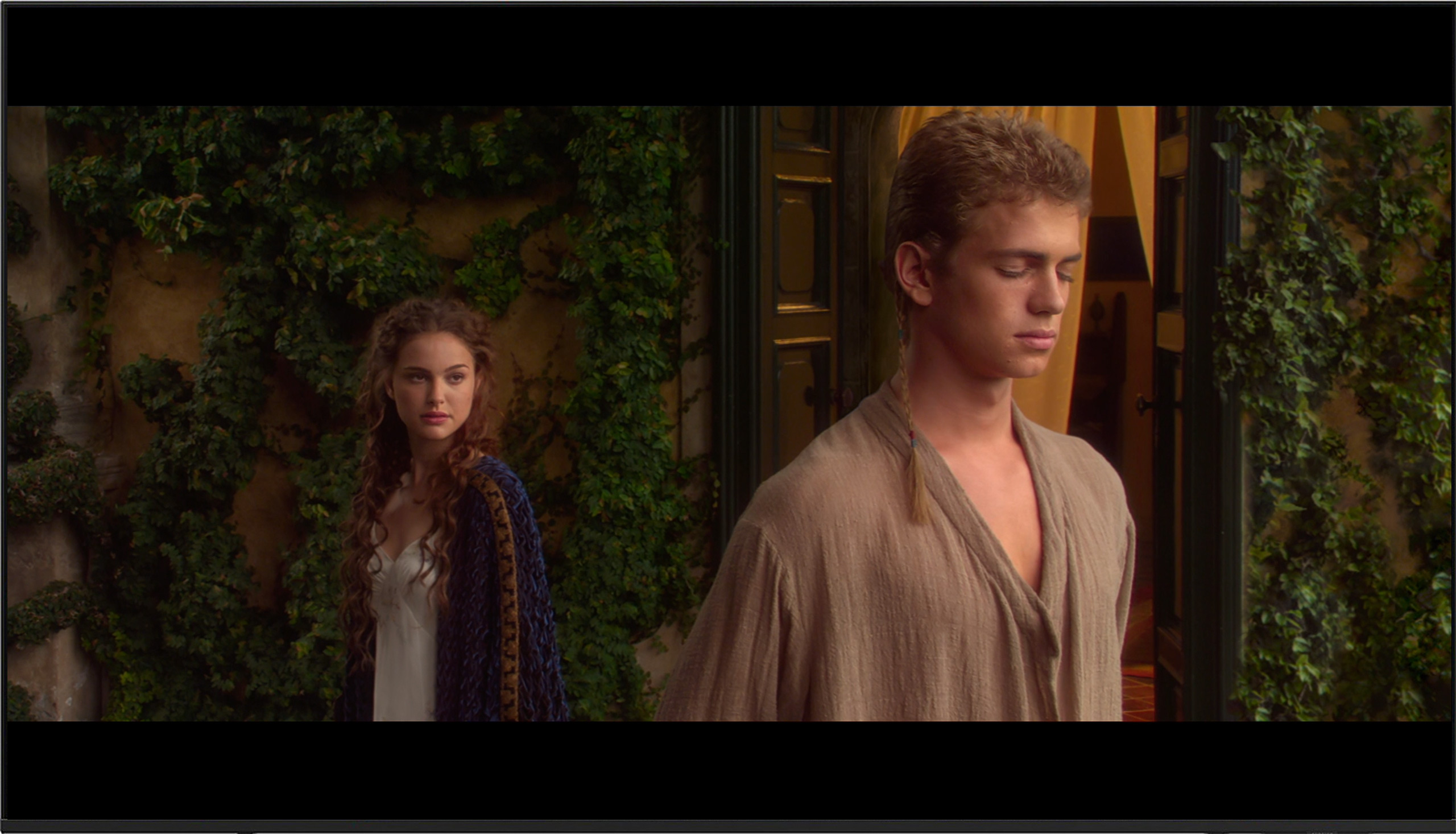
Factory Mode
After calibration
Philips PUS8209 offers many picture modes, but the best of them, without a doubt, is the Filmmaker mode. Despite its proud name, it has its clear problems. In the case of HD content, the white balance is characterised by a strong dominance of red, which causes the picture to be significantly warmer than it should be in reality. The brightness characteristic (gamma), although correct in the mid-tones, has serious issues at the beginning and end of the curve. Drops in the shadows cause a loss of detail in the dark areas, and blowouts in the bright areas make some elements look unnatural.
For high-quality 4K HDR content, the situation reverses. In this case, blue dominates, leading to an artificial enhancement effect, reminiscent of unnatural retail settings. Such an image looks unattractive and inconsistent with the creators' intentions. An additional problem is the EOTF curve, responsible for brightness in HDR materials. It deviates significantly from the reference chart, causing the image to appear too dark, robbing the depth and detail of HDR content.
Against this backdrop, errors in the Color Checker test and deviations in colour palette reproduction are exceptionally large, which further negatively impacts the overall image quality. The Filmmaker mode, although the best among the available options, requires substantial corrections to fully convey the director's vision.
The Samsung U8000F has been tested by us in the best picture mode it offers out of the box – the Filmmaker Mode. This profile is theoretically meant to provide a neutral, cinematic image devoid of unnecessary enhancements and artificial beautifications. In the case of SDR content – primarily in HD or SD resolution – the television performed surprisingly decently right out of the box. The only noticeable flaw was brightness management. The gamma chart showed some deviations – slight brightening or dimming of certain tones – but in practice, this did not significantly affect the viewing experience. Considering the television's segment, it performs quite well.
However, the situation is much weaker in HDR mode. While the white balance was still acceptable, the colour inaccuracies were very apparent. In the Color Checker test, almost every sample was outside the target point, and the image itself appeared unnatural – the colours were shifted, sometimes too cool, other times simply dull and lifeless. The main problem lies in the hardware limitations – the U8000F does not support the wide colour gamut of DCI-P3, so it is physically incapable of reproducing the colours that the HDR standard anticipates. Unfortunately, this is evident in almost every more demanding scene.
Color reproduction after calibration
8.3/10
7.5/10




After calibration, the white balance for HD and 4K content has significantly improved. Although we have not achieved a perfectly flat characteristic, the effect is definitely better than before. The picture on the television no longer appears artificially warm or excessively cold, which significantly enhances the naturalness of the displayed content. The brightness characteristic (gamma) has also been adjusted – the biggest issues at the beginning and end of the graph have been mitigated. The EOTF curve, responsible for brightness in 4K HDR material, has been stabilised, eliminating problems with excessive dimming of the image. In the colour palette test, some imperfections can still be noticed due to average coverage of the wide colour gamut, which is a limitation of the equipment itself. Nevertheless, the final effect is clearly better than before calibration – the image looks more natural and approaches the expectations of the Filmmaker mode.
Right out of the box, the U8000F offered quite a decent image in SDR for its price class. However, we managed to enhance it slightly – we reduced a subtle purple tint and improved the gamma characteristics, giving it a more natural curve. Despite these adjustments, the television still tends to overly brighten the brightest details – the gamma chart shows a clear inflection that cannot be completely corrected.
In HDR mode, however, it is noticeably weaker. It is hard to speak of any significant improvement here – despite attempts to adjust the settings, the image still presents considerable colour inaccuracies. A Delta E exceeding 7 signifies noticeable deviations that could not be effectively reduced. Unfortunately, this is a limitation of the construction itself – the U8000F simply was not designed for serious HDR. In everyday viewing in SDR, it performs quite well, but when it comes to HDR content... it's best not to have overly high expectations.
Smoothness of tonal transitions
6.5/10
9.5/10







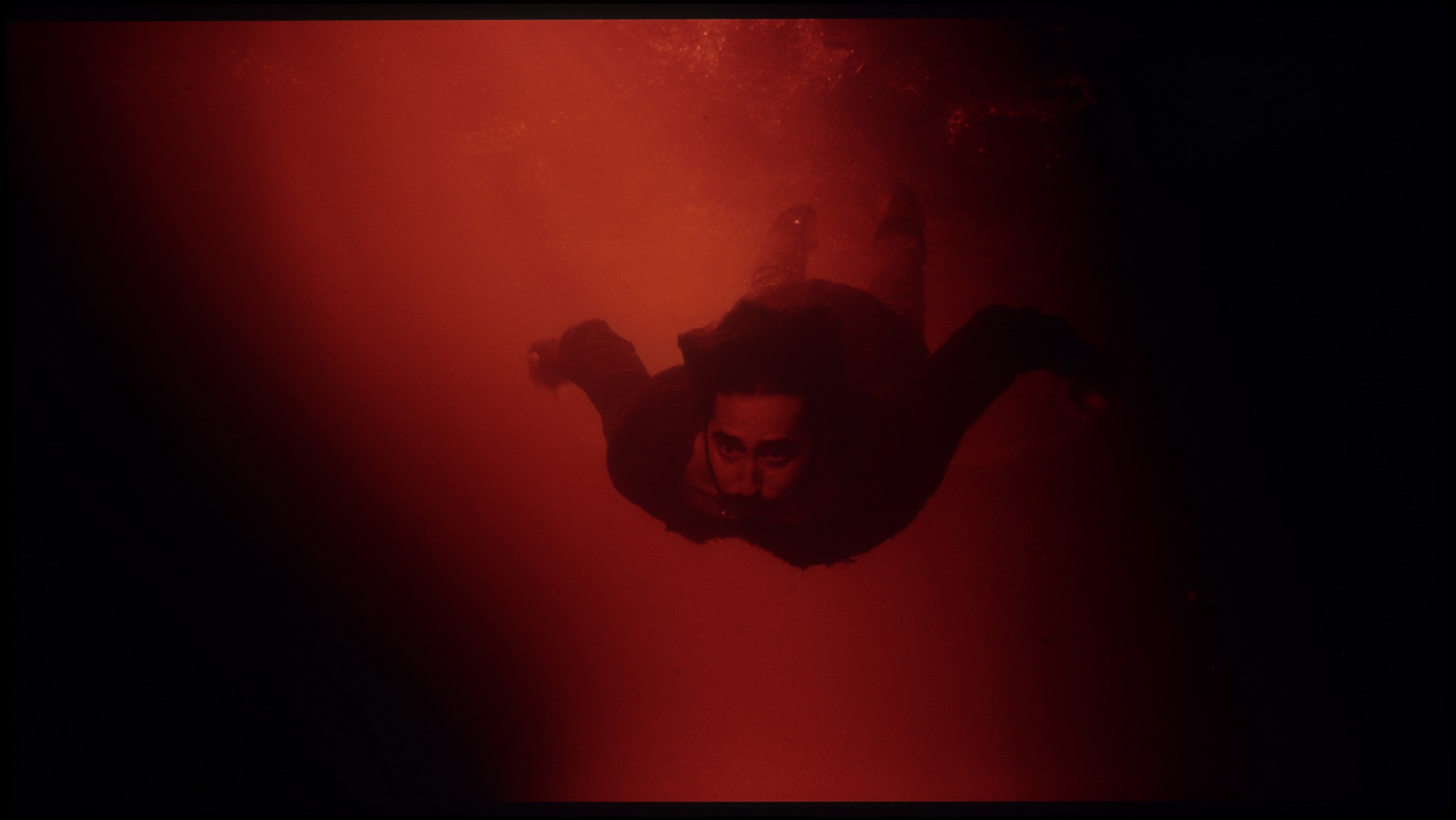




The Philips PUS8209 presents a decent gradient in bright scenes, where tonal transitions are smooth enough not to be noticeable. Unfortunately, in darker scenes, such as red water, the television clearly struggles. Issues with blending shades and a lack of precision in reproducing subtle colour differences are very apparent here.
One of the significant elements affecting the perception of the image is the way in which the television handles tonal transitions – that is, the blending of colours and shades without clear boundaries. In the case of the Samsung U8092F model, it performed really well. On the test screens, we did not observe visible banding or disturbances in the colour gradients. The image retains a natural character, without excessive digital interference, which unfortunately is often the norm in this class of equipment. Minimal imperfections appeared in very bright areas, but they are practically unnoticeable and do not affect everyday use of the television.
Image scaling and smoothness of tonal transitions
5.5/10
5/10
Smooth transition function

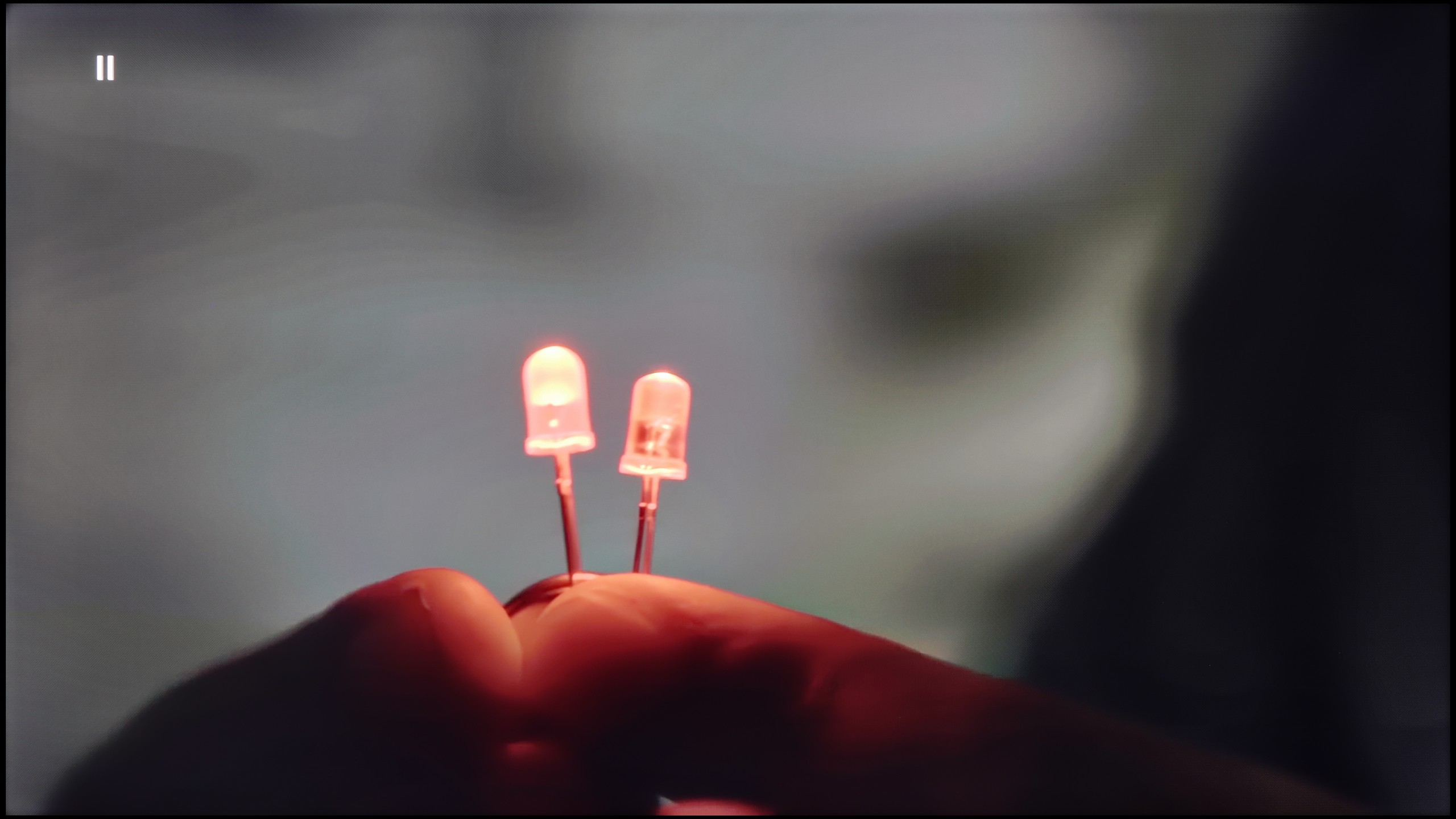
Image without overscan on the SD signal


The television offers a "Distortion Reduction" feature that effectively improves the gradation of tonal transitions, especially when set to the minimum level. Unfortunately, this comes at a cost – the feature simultaneously smooths out details such as the texture of materials. On the positive side, it is worth noting that the operation of this option does not negatively affect film grain, which remains intact.
As for image scaling (upscaling), the television generates a plastic, soft image that generally looks pleasant. However, in the background, one can sometimes notice issues with aliasing on certain elements, such as branches or fine details, which can lower the quality of reception. Despite these minor imperfections, the overall experience of scaling is satisfactory.
When it comes to how the Samsung U8000F handles lower quality materials, we must admit that Samsung has made progress compared to its predecessor from last year – the DU7192 model, which theoretically occupies the same position in the lineup. This year's model has been equipped with a feature to improve the fluidity of tone transitions, which has been implemented much better than last year. Indeed, the television still utilizes quite strong algorithms that can distort details or remove film grain, but nonetheless – it can confidently be said that it works effectively. However, not everything has gone perfectly. The U8000F has noticeable issues with slightly cutting the image when watching very old content in very low resolution. If someone plans to play their old VHS tape, they must reckon with the fact that the image may appear slightly "cut off".
Blur and motion smoothness
3.8/10
5.5/10
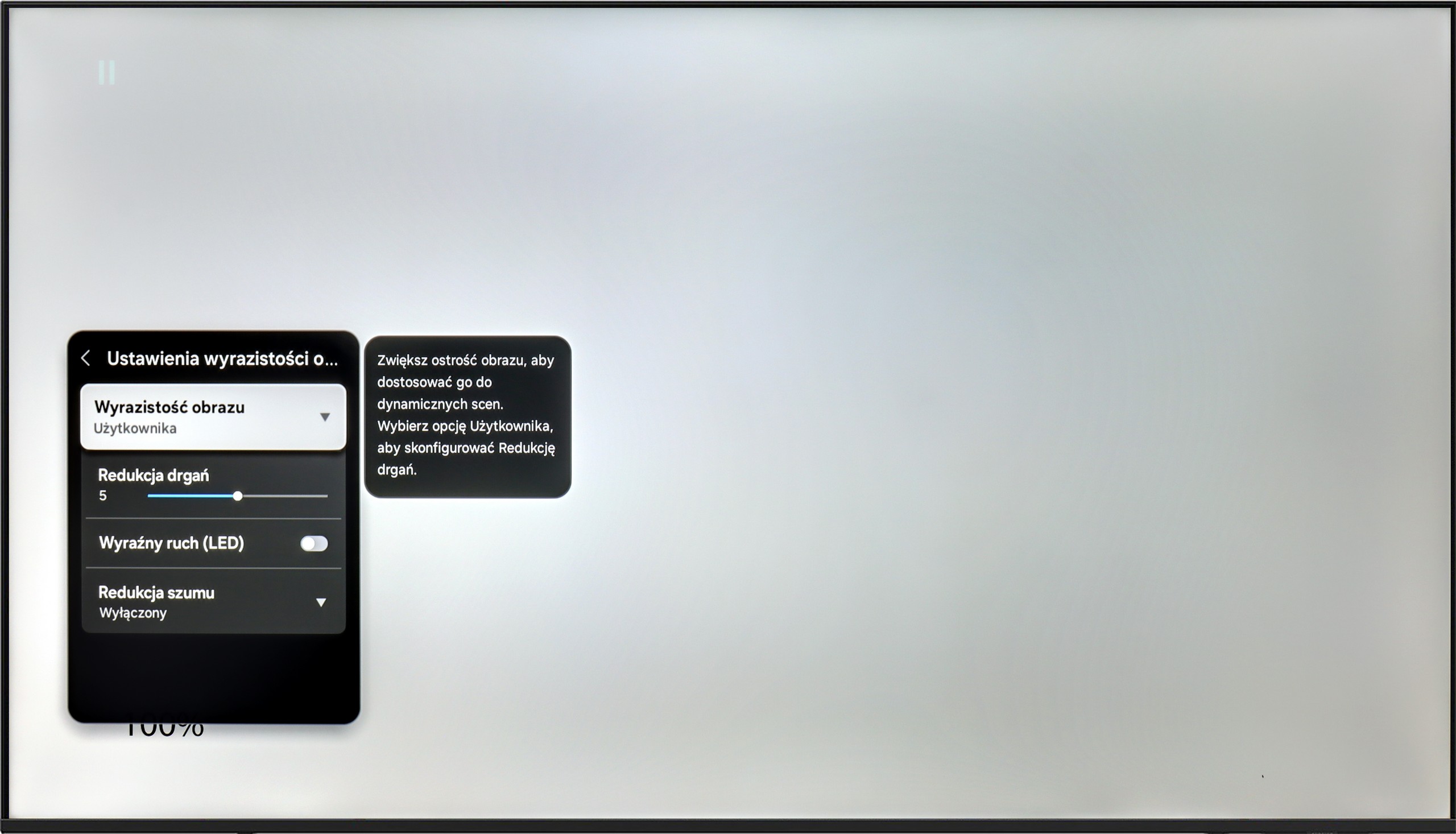
Blur (native resolution, maximum refresh rate):






Blur (BFI function enabled):
Image flickers in this mode



Smużenie ():
Smużenie (Upłynniacz ruchu 4K@60Hz):



The 60 Hz panel in the Philips PUS8209 is mainly suitable for watching films, but there is still a sense of something missing. The television does not offer any motion smoother that would allow users to adjust the fluidity of the picture to their individual preferences, which can be disappointing for some users.
The Samsung U8000F is equipped with a 60 Hz panel, so it's clear right from the start that one shouldn't expect miracles. This is simply the standard in this class – adequate for everyday viewing, but without any fireworks. The television offers a single motion smoothing slider – a feature called "Motion Blur Reduction," which allows us to adjust the smoothness of the image in films. Higher settings produce a more "theatrical" and smoothed effect, while lower settings help retain the film's original character with a slight 24p effect. An interesting feature is "Clear Motion LED," which is the BFI mode – inserting black frames between image frames to improve motion clarity. In practice, however, the screen flickers heavily when this feature is activated and should rather be considered an experiment than something that genuinely enhances gaming comfort.
Console compatibility and gaming features
4.7/10
4/10
- ALLM
- VRR
- VRR range48 - 60Hz48 - 60Hz
- Dolby Vision Game Mode
- Correct implementation of HGIG
- 1080p@120Hz
- 1440p@120Hz
- 4K@120Hz
- Game bar

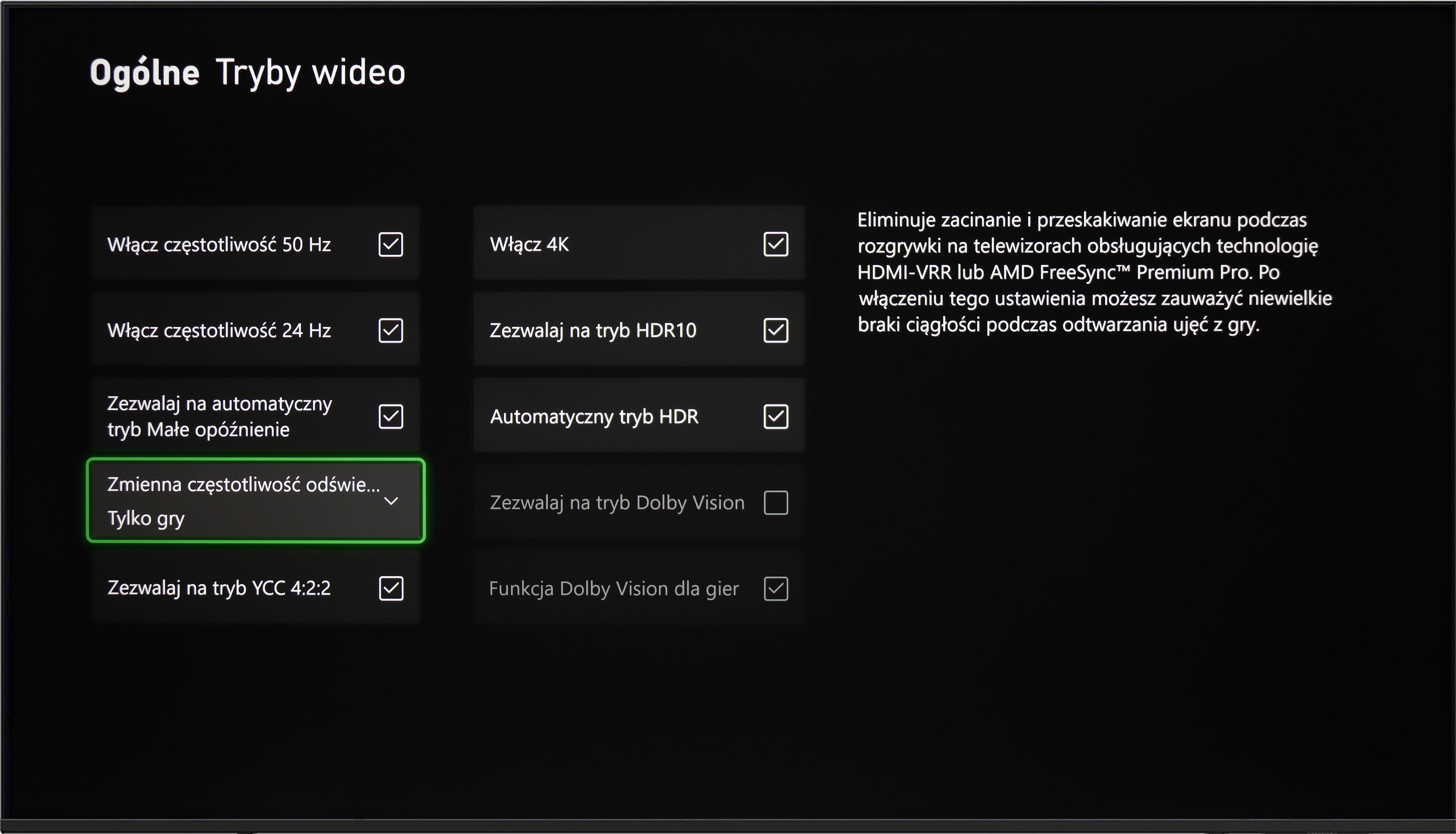

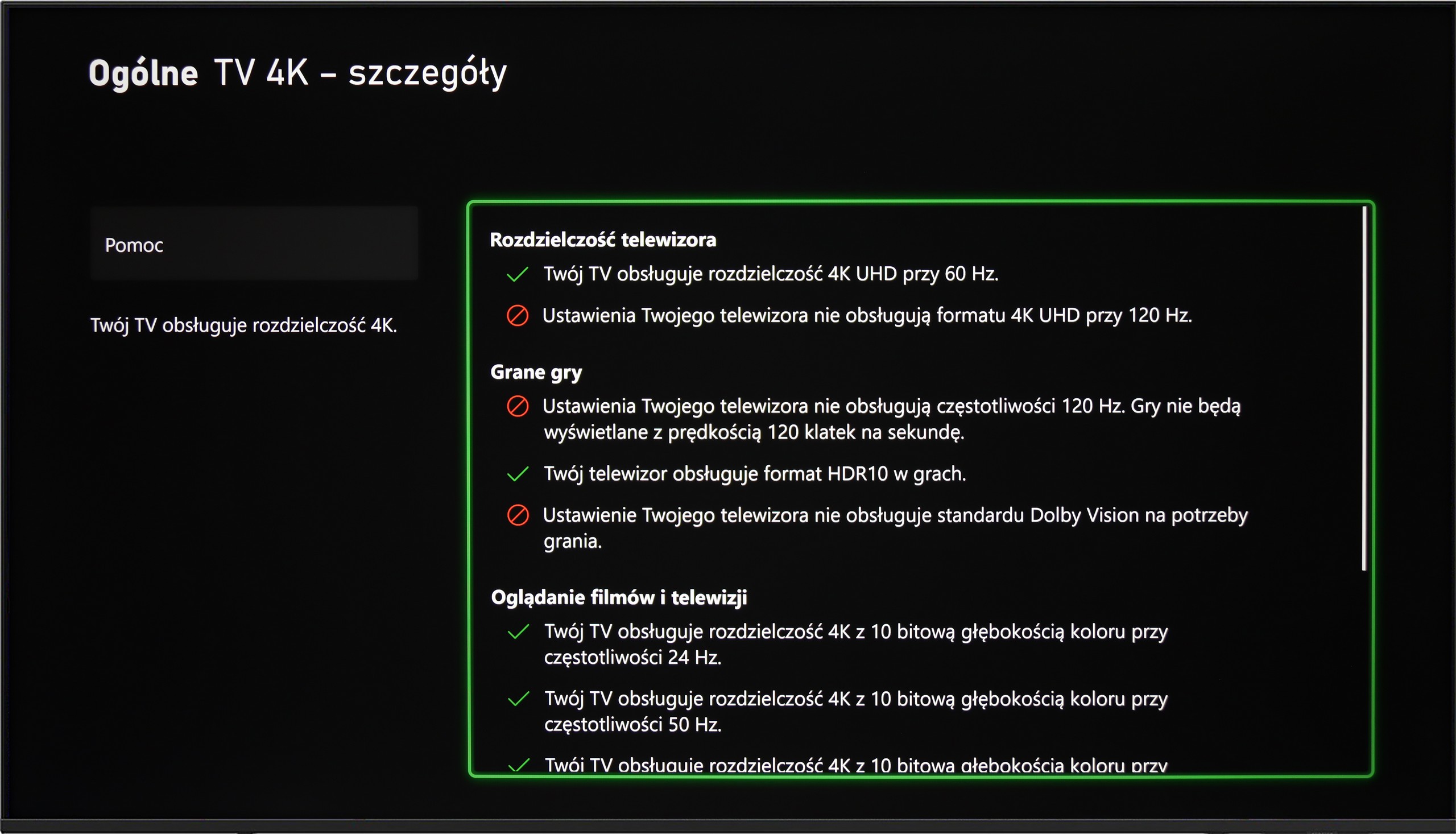

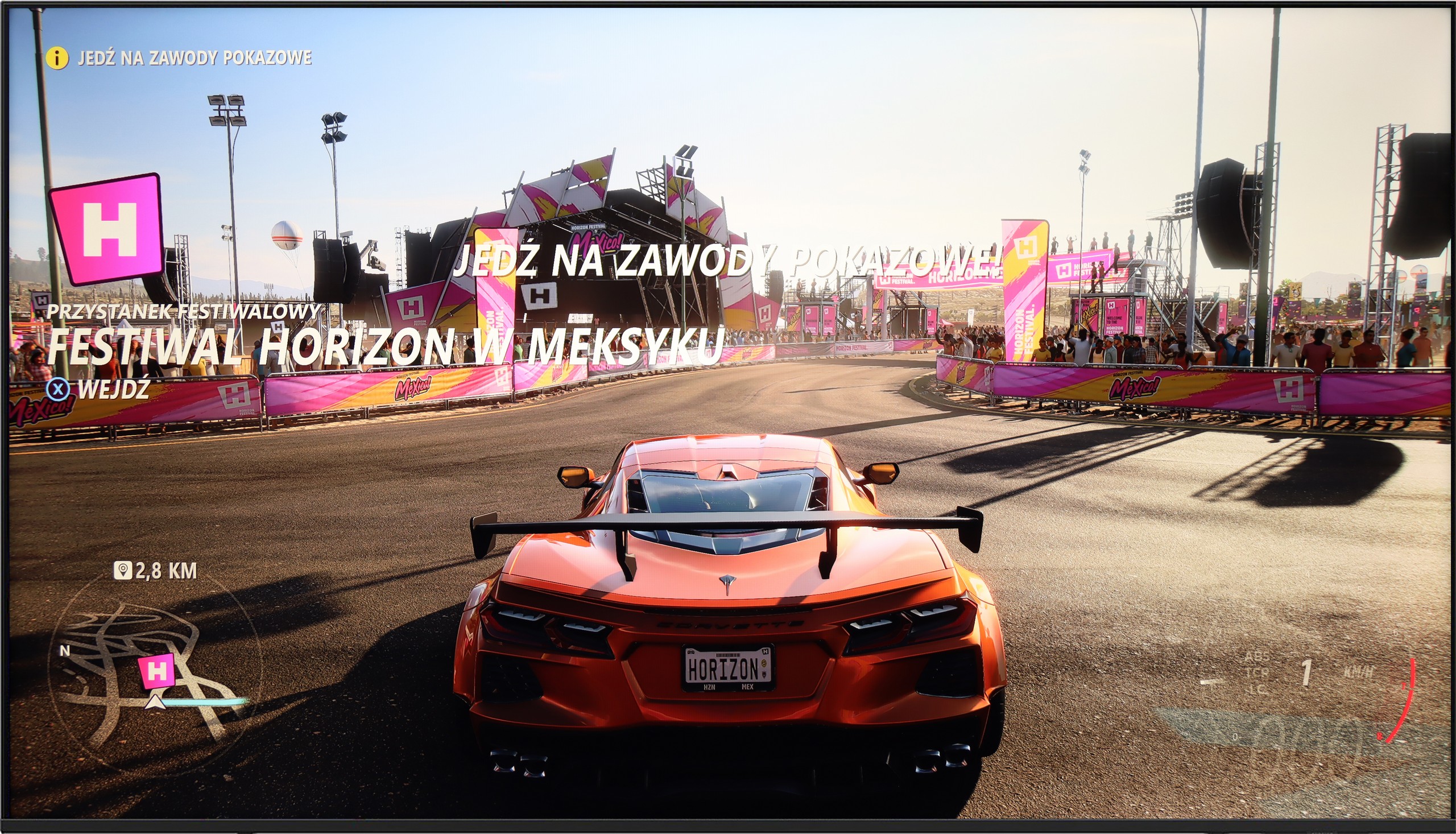

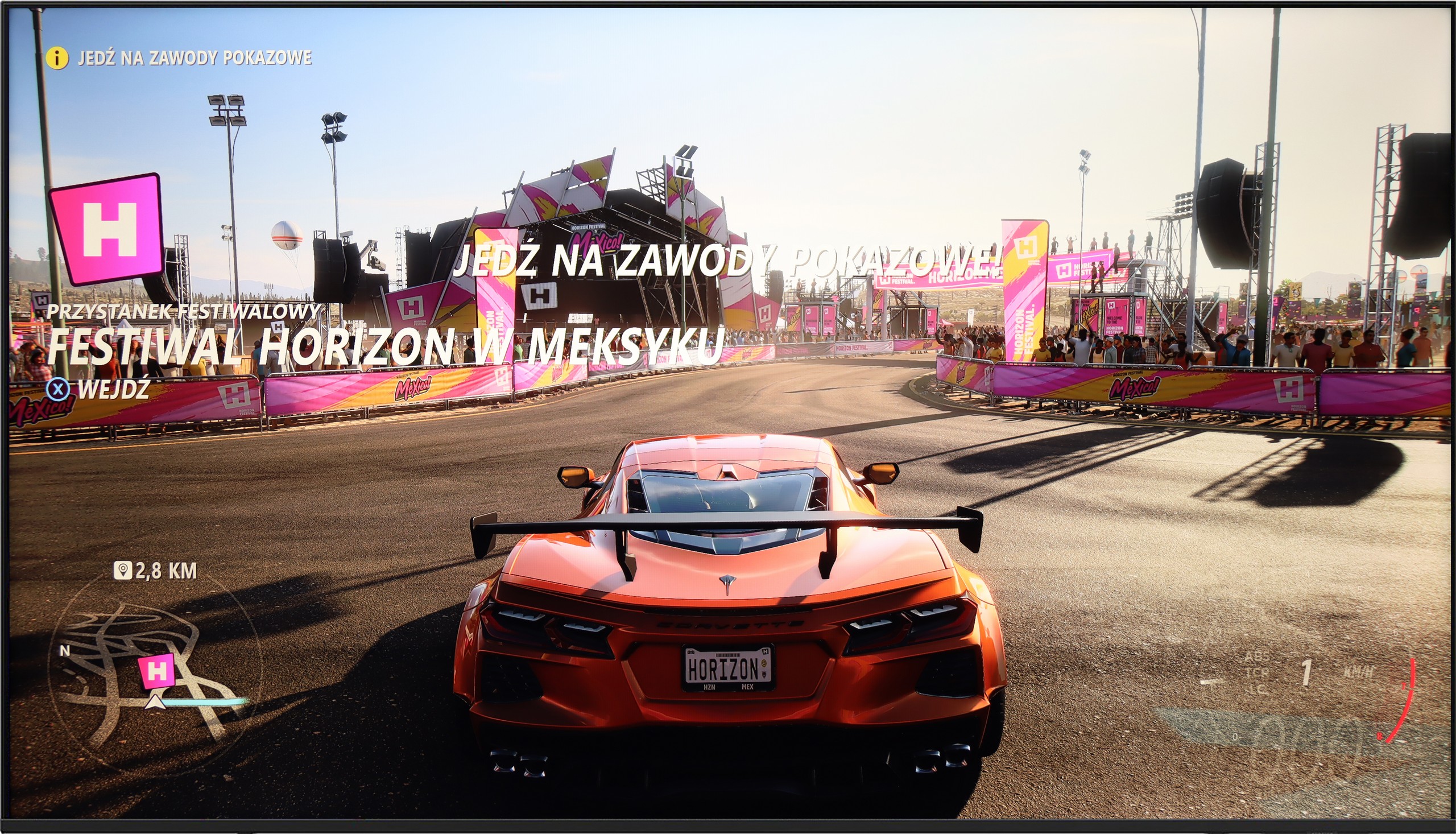
The Philips PUS8209 offers basic features useful for gamers, such as variable refresh rate (VRR), automatic low latency mode (ALLM), and a Game Bar that makes managing settings easier.
Unfortunately, due to the 60 Hz panel, the television will not meet the expectations of more demanding gamers who are counting on higher smoothness and image precision. Additionally, this model does not support any HDR mode dedicated to gaming, such as HGiG or Dolby Vision, which further limits its capabilities in this regard.
Samsung U8000F offers a basic set of features for gamers, which may still be sufficient for less demanding users. It includes an automatic game mode – when a game is launched on the console, the television automatically switches to low latency mode, significantly improving response times. There is also a VRR feature, or variable refresh rate, which operates in the range of 48 to 60 Hz. This means that both Xbox and PS5 will not produce the "tearing" effect – as long as we stay within this range.
Unfortunately, that’s about it for the advantages. Additions like Game Bar or higher refresh rates are reserved for higher-end Samsung models from the 2025 line. In theory, the television also supports the HGiG feature, which should adjust HDR imagery to the creators' intentions. Unfortunately – despite the fact that this feature appears in brochures and promotional materials – its configuration on the Xbox console turned out to be... impossible in practice.
Input lag
10/10
10/10
SDR
HDR
Dolby Vision
The input lag in the Philips PUS8209 is one of its strongest points. With a value of around 13 ms, the television provides a very quick response time, which should please most gamers, both casual and more advanced. This result allows for comfortable gameplay even in dynamic games.
The Samsung U8092F performed phenomenally in our input lag tests. Regardless of the resolution, the results were very low, which is truly impressive for this price segment. One can confidently say that gaming on this television will not cause irritation due to large delays between what we do on the pad and what we see on the screen. For most gamers, even the more demanding ones, this result should be more than satisfactory.
Compatibility with PC
2/10
6/10


On paper, cooperation with a PC seems promising, especially thanks to support for chroma 4:4:4, which should ensure good font readability and detail reproduction. In practice, however, the television has significant issues with displaying text, particularly on dark backgrounds, where the so-called pixelation is clearly visible, negatively affecting work comfort.
Additionally, the lack of support for technologies such as G-Sync means that the smoothness of gameplay when connected to a PC leaves much to be desired, making this model less attractive for users looking for a television for gaming on a computer.
Working on a computer using this television is a true pleasure. The Samsung U8092F supports chroma 4:4:4, and despite being a VA panel, the text readability is very, very good. The television is also suitable for occasional gaming on PC, mainly due to its low input lag. However, it should be noted that the G-Sync feature does not work on this model, which is strange as VRR operated without problems when it came to consoles.
Viewing angles
2.1/10
3.7/10
The viewing angles on the Philips PUS8209 are poor, which is typical for a VA panel. When viewing at an angle, the brightness of the image drops significantly, and the colours lose their depth, which can greatly affect viewing comfort, especially in larger groups or in an unusual setting of the television in relation to the viewer.
TV efficiency during daytime
4.4/10
3.8/10

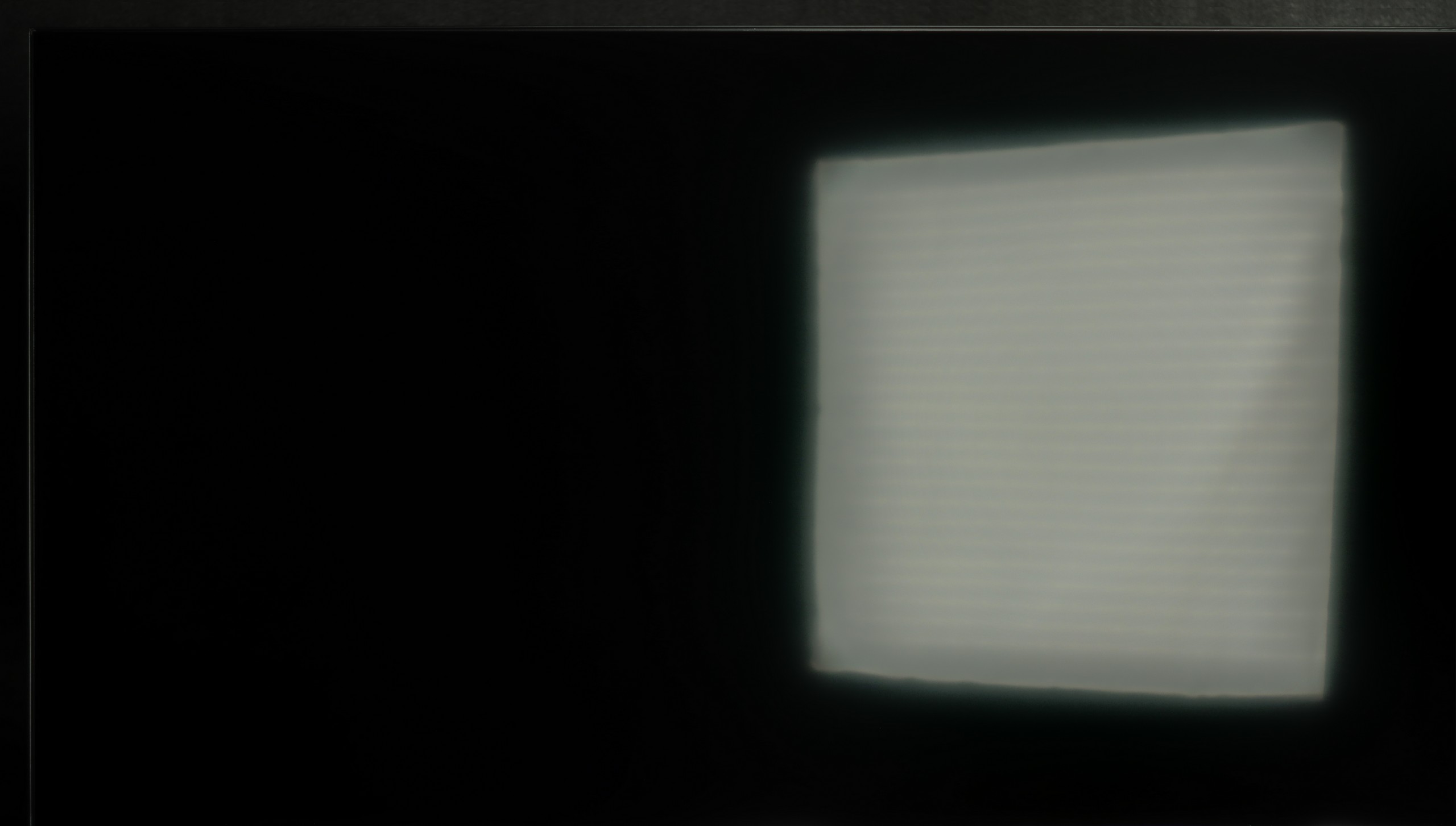

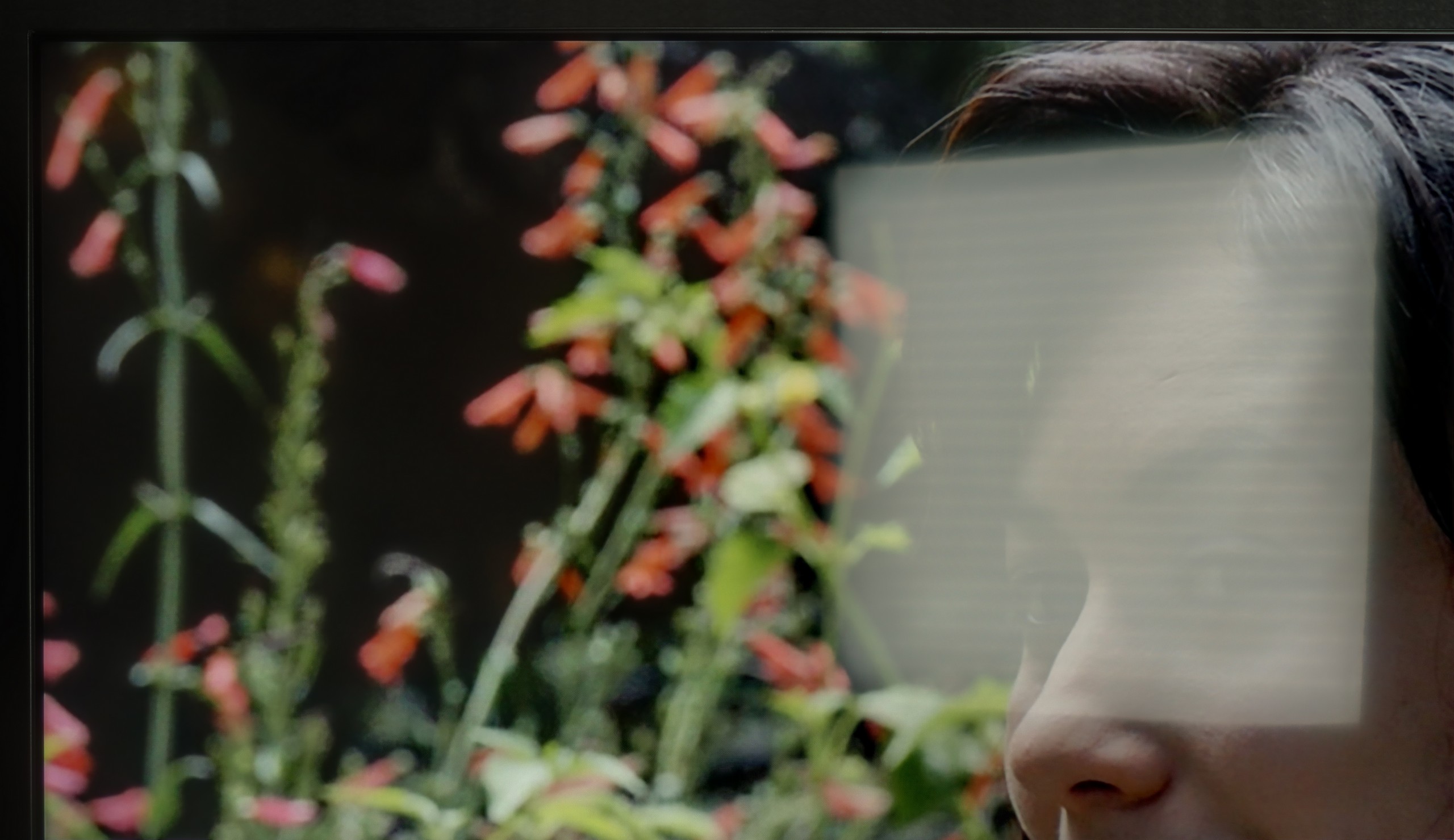
Matrix brightness
Average luminance SDR
Samsung U8000F (VA): 204 cd/m2
Philips PUS8209: 277 cd/m2
The Philips PUS8209 is equipped with a satin matrix coating, which only moderately reduces reflections, which may be insufficient in brightly lit rooms. However, the biggest problem is the low brightness level of 280 nits. In practice, this means that watching content during the day, especially in strong sunlight, can be a challenge, as the picture appears too dark to ensure comfortable use.
Thanks to the satin finish of the Samsung U8092F matrix, it handles glare quite well. The screen does not act like a mirror, and the colours – given the capabilities of this class of device – remain relatively saturated, even in slightly brighter conditions. Unfortunately, the coating itself won't work wonders. The television is simply too dark to effectively penetrate very difficult lighting conditions. If we place it facing a light source (e.g. a large window or a strong lamp) – unfortunately, one must consider that not everything will be clearly visible on it.
Details about the matrix
Subpixel Structure:

Panel uniformity:

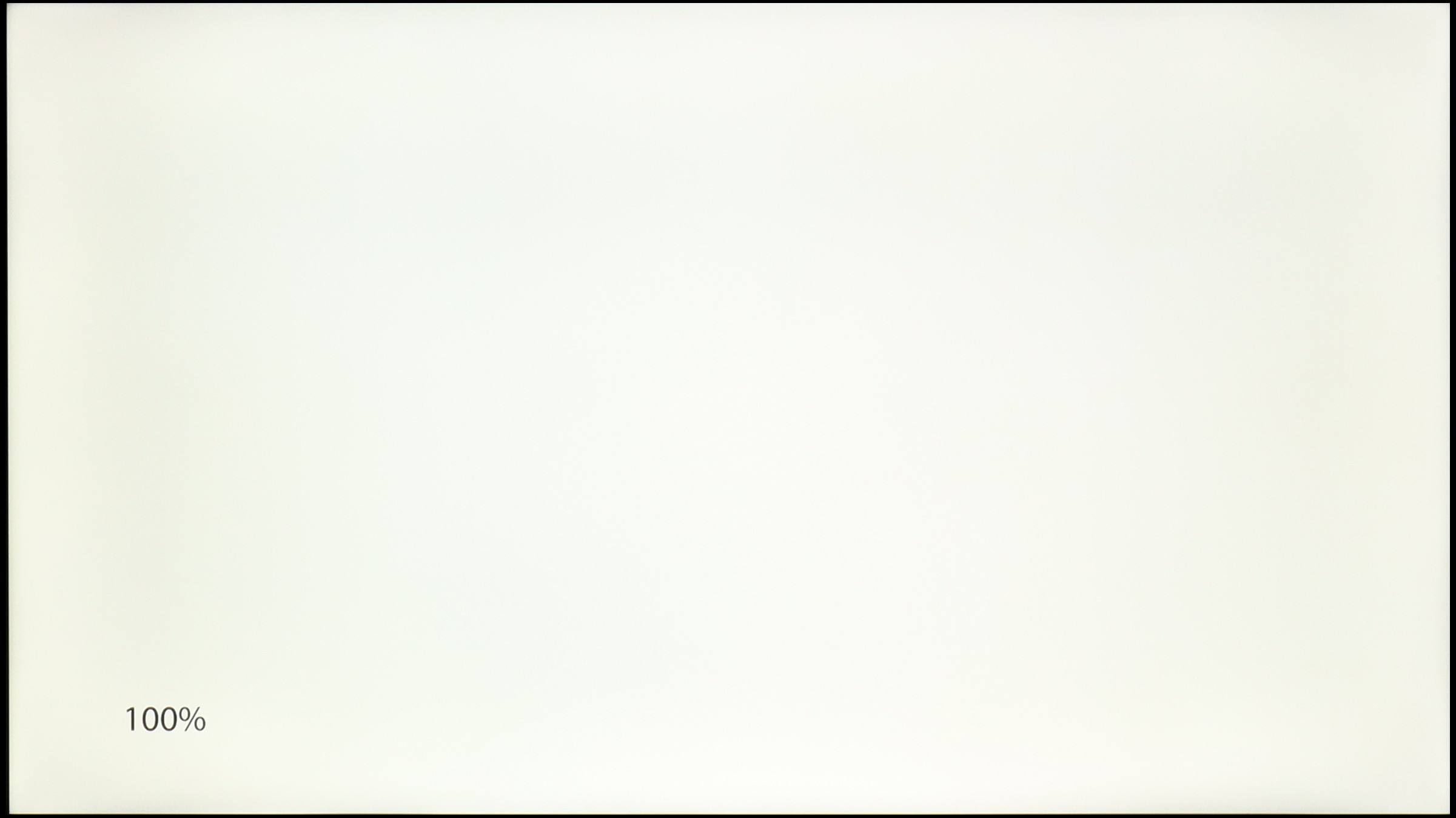
TV features
4.5/10
5.5/10
- HDMI inputs3 x HDMI 2.0, 0 x HDMI 2.13 x HDMI 2.0, 0 x HDMI 2.1
- OutputseARC (HDMI), ARC (HDMI)eARC (HDMI), ARC (HDMI)
- Network InterfacesWi-Fi 2.4GHz, Ethernet (LAN) 100MbpsWi-Fi 2.4GHz, Wi-Fi 5GHz, Ethernet (LAN) 100Mbps
- TV receptionDVB-T, DVB-T2, DVB-S, DVB-S2, DVB-CDVB-T, DVB-T2, DVB-S, DVB-S2, DVB-C
Classic features:
- Recording to USB (terrestrial TV)
- Recording programming
- Picture in Picture (PiP)
- RF remote control (no need to aim at the screen)
- Backlit remote control
- Teletext
- Audio only mode
- Possibility to connect Bluetooth headphones to the TV
- Possibility to simultaneously use Bluetooth headphones and the TV speaker
Smart features:
- AirPlay
- Screen mirroring (Windows Miracast)
- Wyszukiwanie głosowe
- Voice search in native language
- Ability to connect a keyboard and mouse


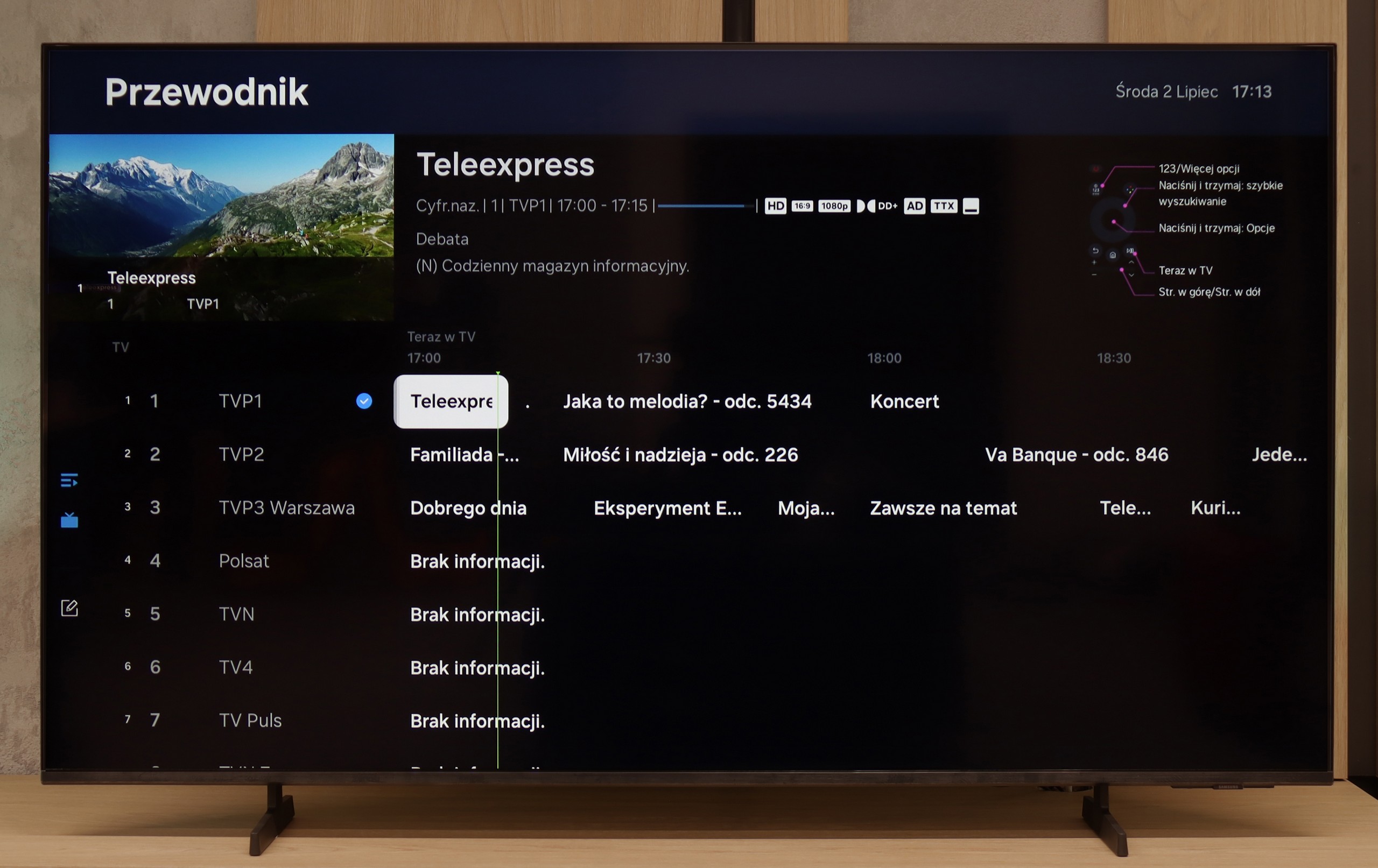
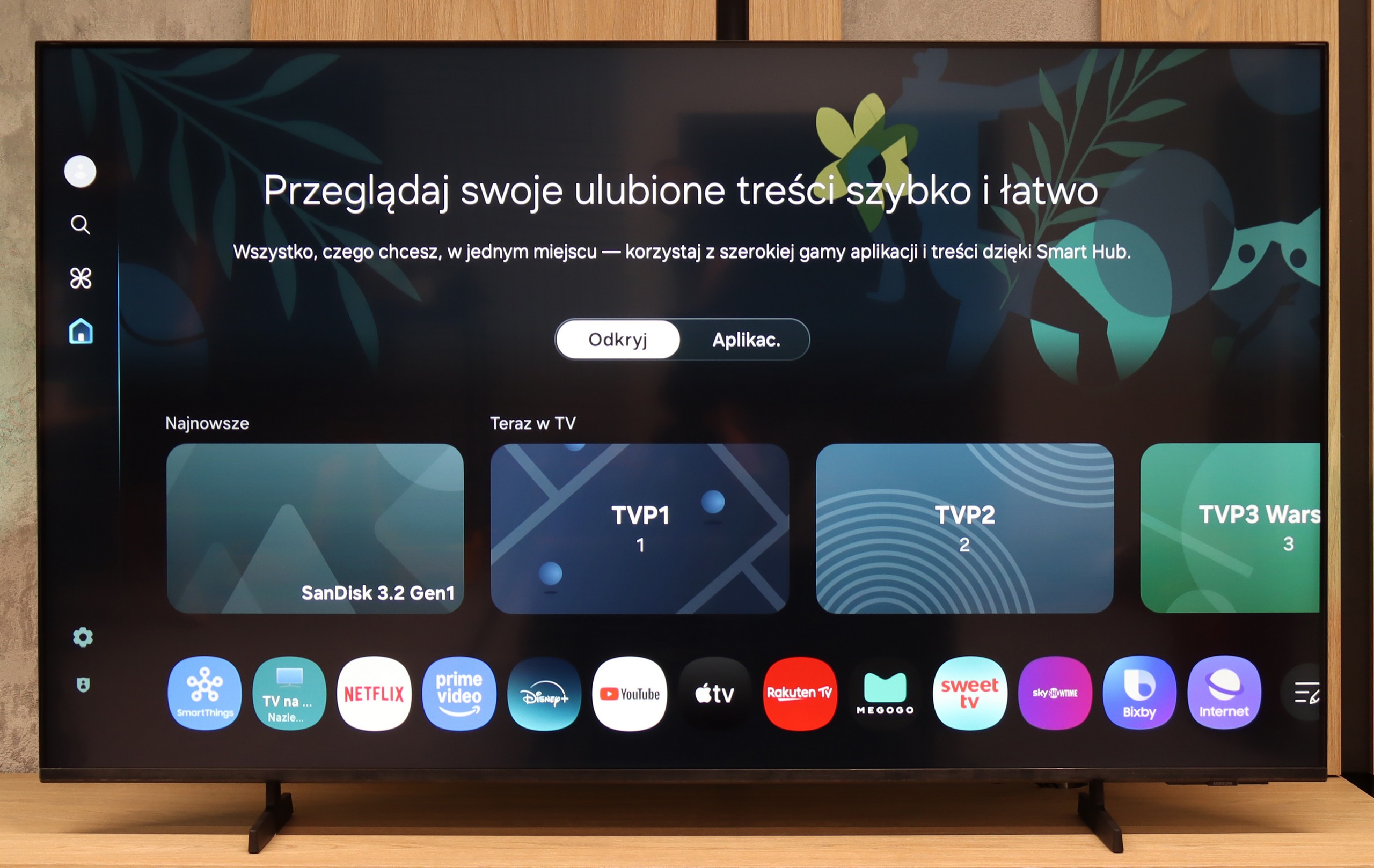
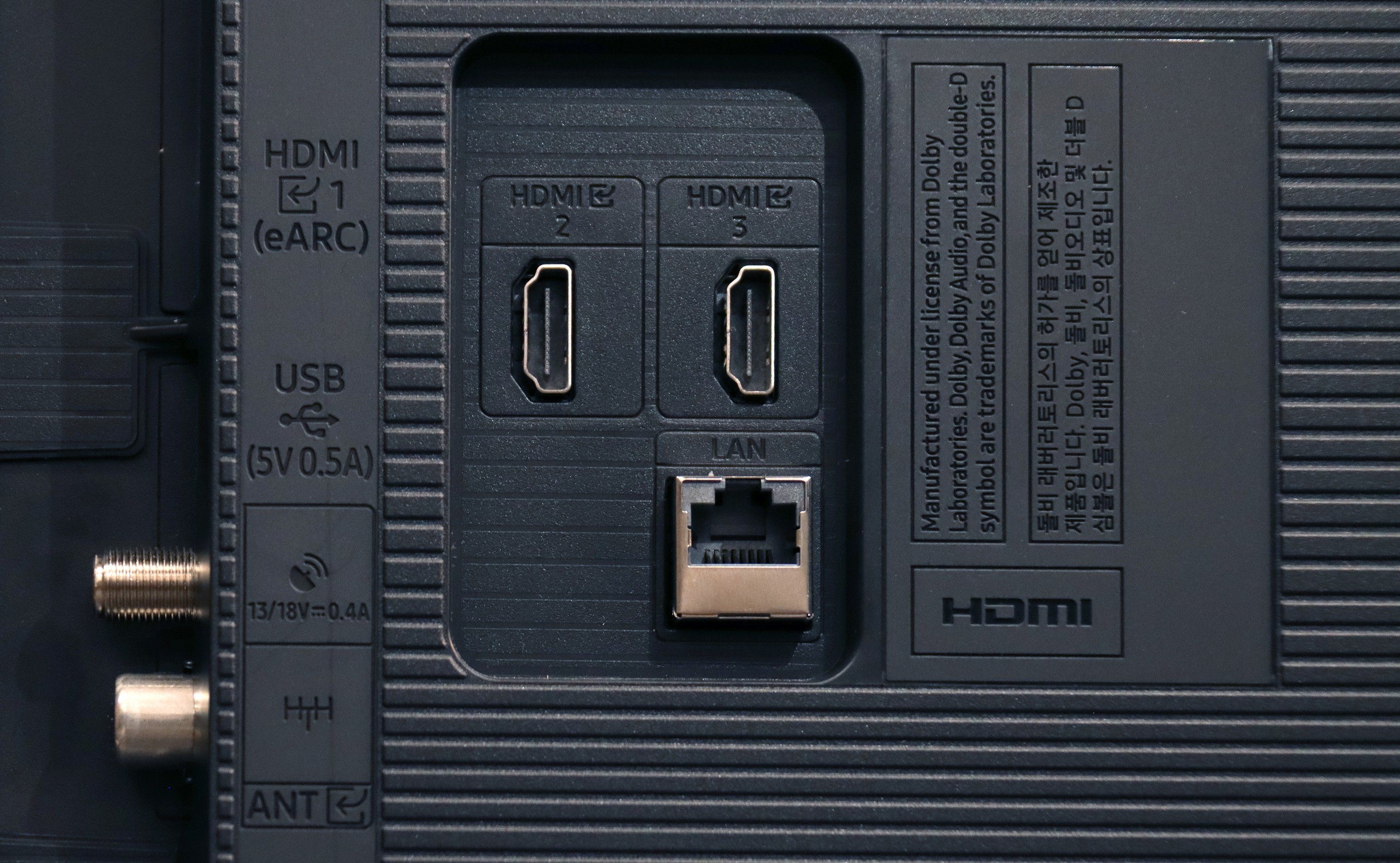
The Philips PUS8209 uses the Titan OS operating system, which, while simple to use, remains limited in terms of functionality. The number of available applications is small compared to more developed ecosystems such as Google TV, which can be disappointing for users accustomed to broader capabilities. Additionally, the lack of support for AirPlay restricts compatibility with Apple devices, reducing the flexibility of the television for content streaming. Although the remote control is interesting, it requires aiming at the screen, which may not appeal to everyone.
The absence of more advanced features, such as PiP (Picture-in-Picture) or programme recording, further limits the device's capabilities in everyday use.
The Philips PUS8209 is a television that draws attention with its interesting solution in the form of a three-sided Ambilight system, which is a dynamic backlighting of the wall behind the television that adapts its colours and intensity to the content displayed on the screen. This effect creates an impression of greater depth of image and enhances immersion, especially in dimly lit rooms. Unfortunately, its potential is limited by the Titan OS operating system, which leaves much to be desired. The limited number of applications and lack of support for popular features such as AirPlay can be a significant drawback for more demanding users. Although Ambilight distinguishes this model from the competition, shortcomings in the operating system greatly affect the overall functionality of the television.
Samsung U8092F – like all this year's models from this brand – runs on the Tizen operating system. The system itself is really well developed: we have access to many applications (though not all), a well-developed smart home integration, and various add-ons, including exclusive Samsung applications. Features such as AirPlay and Chromecast are also available, allowing us to easily connect our phone to the television and share multimedia.
Unfortunately, since this is Samsung's cheapest series in 2025, the manufacturer did not choose to include a solar remote control. In the box, we find a classic infrared remote control that visually resembles a newer version, but unfortunately lacks voice functions. As for typical "television" add-ons – there is no recording feature or PiP (picture-in-picture) mode. On the positive side, the HDMI eARC works well, allowing easy control of devices like a decoder or soundbar with the bundled remote – and it indeed works seamlessly.
Playing files from USB
8/10
8.7/10
Supported photo formats:
Maximum photo resolution:

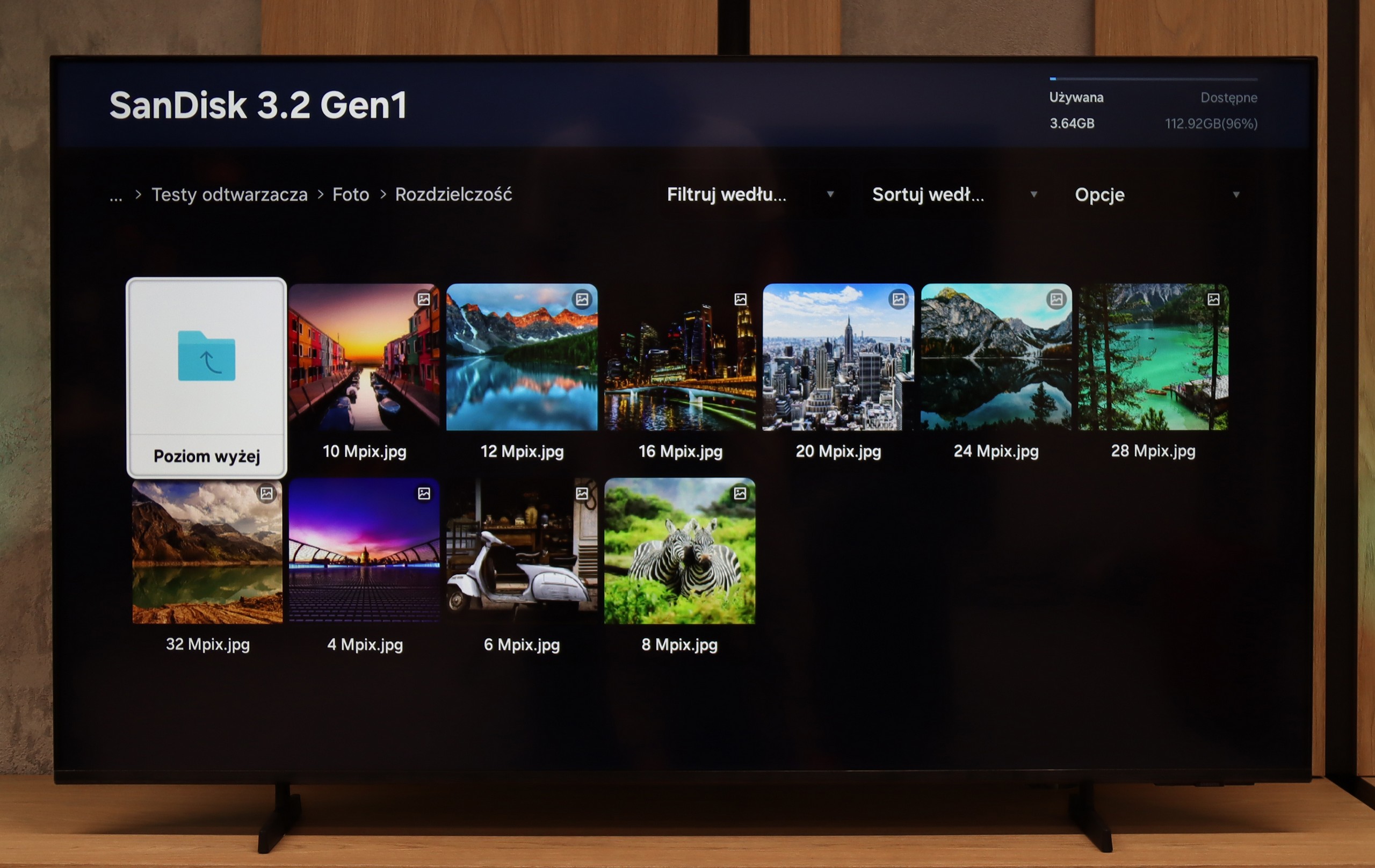
The built-in media player in the Philips PUS8209 performs well in everyday use. It handles Polish characters in subtitles without any issues and allows for the adjustment of colour and font size, which significantly enhances the comfort of using this feature. More demanding users may notice some shortcomings in the supported file formats; however, for most applications in daily use, this player should be completely sufficient.
Samsung U8092F handles the playback of files quite seamlessly – the television supports most popular audio and video formats. Of course, it does not support Dolby Vision, but this is simply not found in any Samsung model.
Certain reservations can be made regarding the support for external text files – those that the user would like to add as subtitles to a film. During our tests, the television only played TXT files, while other extensions such as SRT or SUB unfortunately did not work. This may not be a problem for everyone, but it is worth knowing. Perhaps this is an issue to be improved in the future through a television operating system update.
Apps
6.2/10
8.7/10














































Sound
5/10
5.7/10
- Subjective sound quality:5/105.7/10
- Dolby Digital Plus 7.1:
- Dolby True HD 7.1:
- Dolby Atmos in Dolby Digital Plus (JOC):
- Dolby Atmos in Dolby True HD:
- DTS:X in DTS-HD MA:
- DTS-HD Master Audio:
The sound in the Philips PUS8209 can be described as average, typical for televisions in this price range. The speakers with a power of 2x10 W do not offer exceptional quality or depth; however, they are sufficient for everyday television viewing. On the positive side, it is worth noting the wide range of supported audio codecs, such as Dolby Atmos and DTS, which can significantly enhance audio quality when combined with external sound systems, such as soundbars or home cinema sets.
U8092F does not pretend to have home cinema on board. We receive a standard set of 2 x 10 W, which sounds decent, but without much excitement, though with a slight bass. For everyday viewing, this audio setup is entirely sufficient. We were positively surprised that it managed to play a film with the built-in Dolby Atmos (JOC) codec – although of course, we are not talking about true surround sound here.


